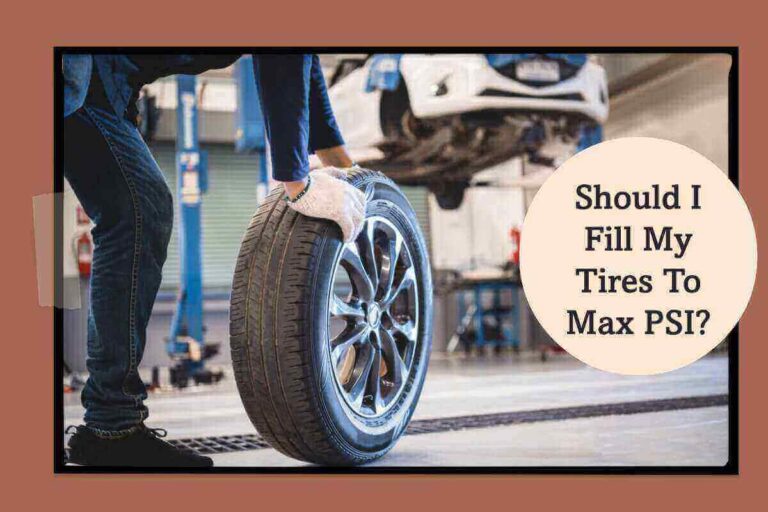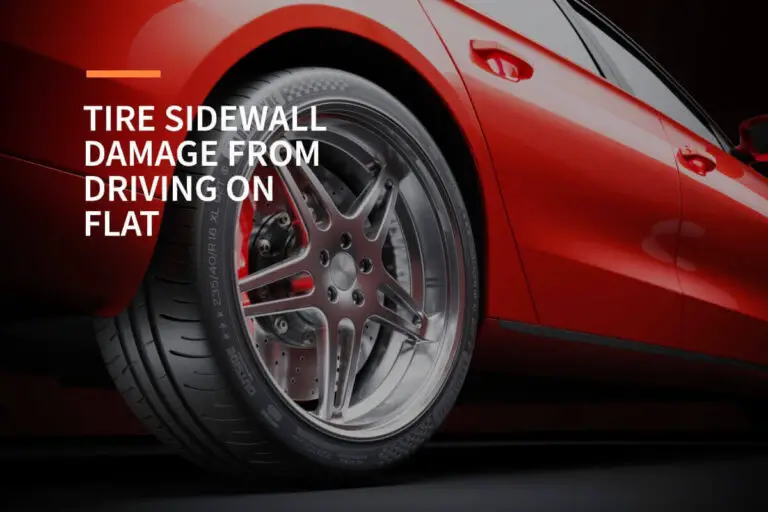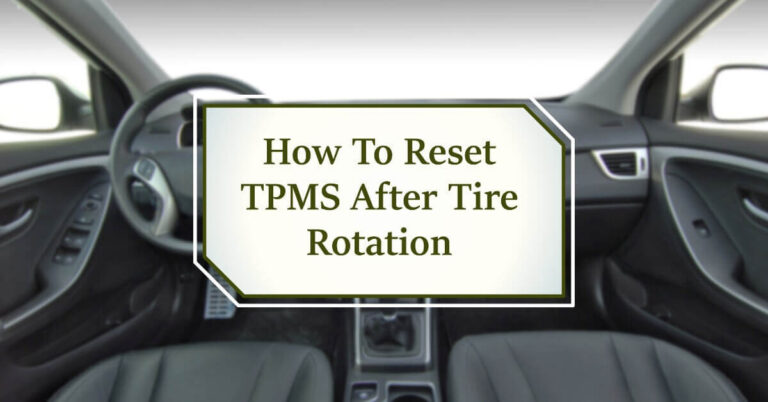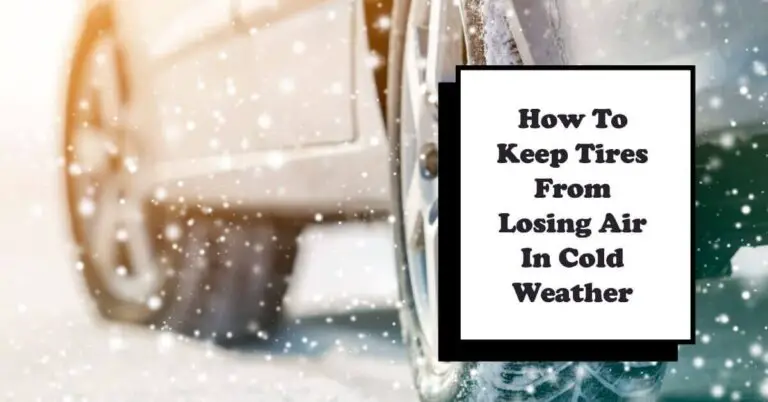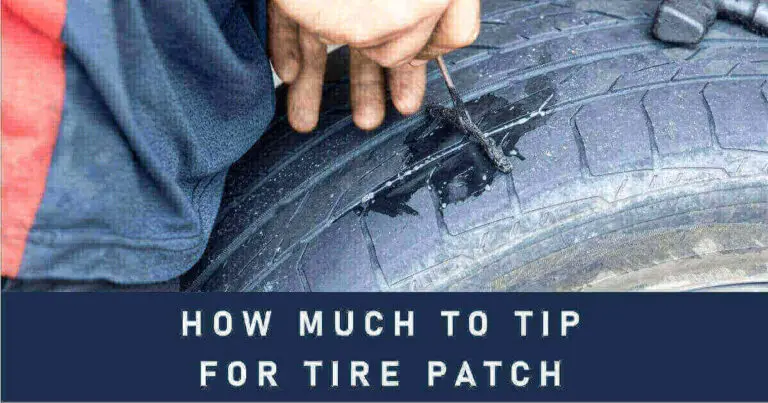The Tire pressure light on is most probably due to the TPMS,
a leading technology that gives you accurate information about tire pressure.
But most time it lights stays on even if you checked that your tires are fine.
Well, TPMS become our life easier but at the same time, it may become difficult.
So let’s look at the article for a lifetime solution!
Why is the Tire Pressure Light On When the Tires Are Fine?
How do I find this question of why my tire pressure light is on even tires are fine?
While I’m going with my friend Adam, I noticed that my tires are fine but the tire pressure light is still turned on.
No doubt, technology gives us a much comfort but at the same time, we face sometimes more difficulties.
I found a solution and techniques for why tire pressure is still light on. While in my case, there was a problem with the TPMS.
So, a detailed guide for you, after that you can’t face any issues if you find you will easily correct them in no time.
What is a Tire Pressure Monitoring System (TPMS)?
TPMS is a Tire Pressure Monitoring System that is used to warn you about the tire pressure of one or more tires for your car. When it found that tires have low pressure it gives you a Yellow sign which blinks on the dashboard.
According to National Transportation Safety Board, there are more than 33,000 accidents are held due to the tires, by inflated and most of them are due to underinflated tires.
There are two types of TPMS:
Direct TPMS
Direct TPMS detects low tire pressure via TPMS sensors. It refers to the use of the pressure sensor directly mounted to or tires of the vehicle.
Advantages of Direct TPMS
- It sends the exact pressure of the tire by reading from the inside of the tire.
- Their accuracy is not 100% because of the movement and replacement of tires.
- Simple resynchronization after tire rotation or tire replacements
- Batteries have a long life that lasts almost 10 years.
- Maybe use it in the spare tire.
Disadvantages of Direct TPMS
- It is much more expensive than indirect TPMS
- Easy resynchronization, but maybe it needs costly tools
- The sensor will be changed if the battery is drained.
- Sensors are susceptible to damage during mounting or demounting
Indirect TPMS
Indirect TPMS detects low tire speeds by comparing the wheel speeds through the technology called an Anti-Lock Brake System (ABS). When a tire loses air this technology detects and its diameter decreases slightly.
Advantages of Indirect TPMS
- Indirect TPMS is inexpensive compared to direct TPMS.
- Requires less maintenance than direct TPMS
- Requires less programming than direct TPMS
Disadvantages of Indirect TPMS
- It is not much accurate if you purchase a small or big tire.
- Unreliable maybe in most times when tires are unevenly worn.
- After properly inflating every tire, a reset is necessary.
- After routine tire rotation, a reset is necessary.
What Signs Does TPMS Light Give You?
TPMS is behaving in many ways, the likely signs that TPMS light gives you are:
It Blinks for a Minute then Stays On
When you start your vehicle you notice that the light is blinking for some seconds, it considers that the tire has less pressure average of 25% less than the average pressure which is recommended.
But you notice that the light is blinking for many minutes, and after a few minutes it may be turned OFF, you should consider taking an appointment with your mechanic who has experience with TPMS because it is a problem with your TPMS system.
It’s Coming On and Off Regularly
You notice while starting your car that the light pressure and TPMS are coming ON and OFF regularly, it should be a problem with your TPMS system. You should meet your mechanic and look at your vehicle TPMS if the light is coming On and Off regularly.
Light Is On When Driving
You start your vehicle and you notice that the light is On, and after a while, you again notice that the Light is On, you should check your tire pressure first.
After confirming your tire have accurate pressure which is recommended, you again see that light is still On.
You may reset your TPMS or go to your mechanic for checking the TPMS system because it is a fault with the TPMS.
Solid Reasons Behind Low Tire Pressure Light but Tires are Fine
Some solid reasons which are affected directly that you notice that your tire is ok but the low tire pressure see the light ON:
Outside Temperature Change (Most Likely in Winter)
Some of the main reason is you ignore that and focus on fixing your tire and tire pressure.
But the temperature affects largely tires, in cold weather, PSI causes a drop. For every 10 degrees of increase in temperature, your tires can be expected to increase by 1-2 pounds of pressure.
And alternatively, excessive heat can cause your tire pressure to temporarily increase.
So, in cold weather, if your TPMS stays light On, you should definitely check your tire pressure, and confirm that your tire has enough recommended pressure.
A Tire Change or Rotation Was Recently
Tire rotation or change did not affect directly your tire pressure. But it confuses the car.
This is because the front and rear tires have different PSI and TPMS is provided by such programming with the different PSI made by the manufacturer.
Thus, by changing or rotating, the TPMS will give you a sign of false or low tire pressure.
The TPMS Sensors are Damaged
You all notice that no problem with the weather, you have good pressure in the tire which is recommended. And even tire changing or rotation are not affected the TPMS.
Your tire pressure is fine with the recommended pressure.
Now, there is a problem with your TPMS. Maybe your TPMS is damaged and it does not show you the accurate reading.
You should definitely go to your mechanic or reset your TPMS by reading the handbook or the below information. But it is recommended that you should visit your recommended.
There are 2 reasons also that are responsible for the damage to the TPMS sensor.
Due to Batteries
One reason for damaging your TPMS sensor that provides you with false readings is batteries.
However, batteries can last a decade, it can last for 6-10 years.
But the possible reason for the damaged battery is drainage, your battery is drained and does not give you the correct information.
Due to Short Circuit
There are any internal error or short circuit which happens in the vehicle and cause damage to the TPMS sensor.
Air Loss Due to Some Physical Impacts
Air is lost in many conditions, you are going on the road, some things like nails, glass, debris, or any other sharp objects will affect air loss in the tire.
Also, the irregular roads that contain jumps and many hard impacts the air loss in tires.
Then you should check your tire pressure again if you confirm that your tire pressure is fine. Then there will be a problem with the TPMS.
For checking tire pressure anywhere you may contain tire pressure detection tools.
The Wheel Speed Sensors Are Faulty
In indirect TPMS, the reading is sent through sensors which are located in the tire. Maybe the faulty sensor which is located in the wheel sends the wrong reading to TPMS and its effects turn On the light tire pressure.
Pressure in Spare Tire is Low
While most recommended that it is ok with the low tire pressure in the spare tire because we use it for some time.
But it would be best if you kept the recommended pressure which is given for the spare tire.
Some spare time contains a TPMS sensor, so easily locate the low tire pressure with the help of TPMS.
The Dangers of Driving with the Low Tire Pressure Light On
If you notice that your low tire pressure light is On, you should check your each vehicle tire.
But if you don’t have any tools for measuring your tire pressure, you can easily travel some miles, but check the pressure of the tire as soon as possible with the nearby tire shop.
There are many dangers if you still driving your vehicle with low tire pressure you may face following dangers:
Fuel Inefficiency
If your tire has low pressure, it will definitely consume a lot of fuel. The engine has more load on it and it takes fuel to run the vehicle.
Flat Tires
While your vehicle has low pressure, now there is more load on the tires. The whole vehicle has a load on the tires, they can’t handle much pressure.
So, the tire will be inflated in very less time if you drive with low tire pressure even ignoring the TPMS light On.
Tire Failure And Blowout
Many accidents are due to tire blowouts. Tire failure or blowout occurs when your tire has low pressure.
Driver does not handle too low tire pressure if the tire is a blowout. Which leads to accidents.
It is the most dangerous part while you driving on the low pressure tire.
Vehicle Handling
While your tire has low pressure, now your vehicle goes turns left or right in less time when it has no pressure tire almost.
It takes much difficulty to brake, as a connection between the brake and tire, and less now. So, it is difficult to handle the low pressure tire vehicle.
How to Check Your Tire Pressure With the Pressure Gauge:
In low temperatures or in winter, your vehicle tire can cause heat when friction is produced while driving. So, should check your tire pressure after 3 hours or in the morning.
You need a pressure gauge for checking the tire pressure. You may purchase them online or at any local shop or go to any near tire shop for measuring them.
So, here are some steps:
- Remove the cap from the air valve on the tire.
- Press the pressure gauge against the open valve stem for a second or two.
- Read the air pressure gauge. While using manual gauges, a dial points to the pressure or a bar indicates the pressure by how far it was pushed out. The pressure is which is read through the pressure gauge that will appear on the digital screen.
- Compare this number with the recommended tire pressure.
- Replace the tire’s air valve cap.
- Repeat the above 5 steps for each tire.
While applying the above steps, you can easily check your all tires’ pressure with the help of a pressure gauge.
Now, going to fix the light that won’t off.
What To Do When your Low Tire Pressure Light Won’t Turn Off
In order the viewing all the reasons above, why is your TPMS light On still on even tire is off? If you do face not any problems from the above, there will be the following solution!
When Driving in Colder Weather
In cold weather or in winter, the tire is cold and it does not show its original tire pressure.
The PSI is shown as low in cold weather.
The better solution for checking the tire pressure is whenever it is warm, or experts say, wait at least the 3 hours or check the pressure of the tire in the morning.
Fixed The Light That Won’t Turn Off
You checked all the above methods, and you don’t find any answers. For confirming it the last time, check your tire pressure again.
If you find that tire has enough tire pressure which is recommended, you should go to the next step if your TPMS is not working.
TPMS needs to be reset. You may reset it yourselves or go to any tire shop for fixing the TPMS.
How Much Cost To Fixing The TPMS?
If you have a warranty for the TPMS, you should check this for free.
If you don’t have one, then you can fix the TPMS around the price of $100-$300.
Related: Cost To Replace TPMS Sensor
This is a fair price and not much expensive by the fixing of the TPMS.
Where’s the TPMS Located?
TPMS is located on the inside of the tire and attached to the rim. If you separate the tire or remove the tire from the rim, you see a small cylinder, which is called a pressure sensor.
While the TPMS reset button is located under the steering wheel. Where you can reset the TPMS.
How to Reset the Tire Pressure Light
You find the last option by resetting the tire pressure light, here is how you can reset the tire pressure light.
Using the TPMS reset button which is located under the steering wheel. When the tire pressure light blinks three times, release pressure on the TPMS reset button. Start the car, then wait for the sensor to refresh for around 20 minutes. If you can’t find the reset button of TPMS, consult the owner’s manual for your car.
Honda TPMS Light On But Tires Are Fine
If you find that the TPMS light is On even tires are fine, you checked the tire pressure of all tires, here are some reasons:
- If the TPMS light is On, there are many probably, the batteries of the TPMS are failing and it does not perform well and does not read the tire pressure correctly.
- To fix the batteries, you should go to the tire shop.
- TPMS continues to turn the light On, but the tires are fine as well, it may have a leak and this leak needs to be patched or you will use a new tire.
- You should take an appointment with your mechanic to remove the errors in the TPMS.
Best Air Pressure Gauges For Tires
With the most
Astro Pneumatic Digital Tire Inflator with Hose
Astro Pneumatic Digital Tire Inflator is the best air pressure gauge. It contains AAA batteries with more than 4X battery life. The accuracy is amazing and leading other high demands and price gauges. It measures and gives a sign of inflating and deflating tire with the best accuracy and 0.1psi resolution for use and working best with the TPMS.
Motion Pro Digital Tire Pressure Gauge
Next, the best gauge from Motion Pro is a precise digital readout to 1/100th PSI. With good accuracy and a Billet aluminum body, it gives you maximum comfort as their programming is also allowed if you can want to use it. Their Battery is powered (1000 hours of continuous use) with a battery strength indicator included.
Milton S-530 Compact Digital Tire Inflator with Pressure Gauge
Milton S-530 Compact and digital pressure gauge whose accuracy is amazing and good material production. Two 2 AAA batteries are included with easy to read digital screen.
Milton Precision Digital Tire Pressure Gauge
Milton Precision has the most accurate tire inflator gauge with a good 0. 05 % accuracy. The 2 AAA batteries are included which have more power than too long many hours.
Milton (S-934) Dial Tire Pressure Gauge
Milton S-934 is Dial Tire Pressure Gauge. Their accuracy is great and there is no need for a battery in this dial pressure gauge. It can easily give detail about deflating and overinflating tires and can be used in cars.
That’s why a proper pressure gauge is recommended to keep with you to check out the tire pressure whenever you need it.
Is It Safe To Drive The Car When the TPMS Warning Light Is On?
A BIG NO. When you see that your TPMS light is On. It means that one of the tires is underinflated or overrated as the TPMS are detected.
So, you should instantly take action. Either you can check the pressure of the tires for yourselves or go to any nearby shop as soon as possible.
We discuss some dangers above that it is not safe for driving a car while the TPMS warning light is On.
You should face the following dangers:
- Fuel Inefficiency
- Flat Tires
- Tire Failure and Blowout
- Vehicle Handling
How Do I Know Which TPMS Sensor is Bad?
You consider that one sensor of the TPMS is bad or damaged, now you want to figure out which TPMS sensor is bad.
Using a pressure gauge to check the pressure in each tire is the quick and easiest approach to figuring out the problematic tire sensor if one of your tire sensors fails.
Also, to solve and figure out the TPMS sensor, you can alternatively use a TPMS scan tool or the trial-and-error method of deflating each tire.
How To Fix the Faulty TPMS Sensor?
Once you find the that TPMS sensor is not working and the light is On in TPMS. Now you need to fix this faulty TPMS sensor.
Here are some steps you can easily fix the TPMS by yourselves:
- Firstly, you can drive your car at the speed of 50mph for around 10 minutes. This distance will give a sign to TPMS that on this air pressure, tires are running.
- Even if the light is still on and the TPMS sensor not working, then you need to reset the TPMS.
- Hold the reset button of TPMS for around 10 seconds until the sounds of beeps are not heard of you. And then release the button after hearing the voice.
- The last step, drive a car for around 20 minutes to complete resetting the TPMS.
- The TPMS reset button is located under the steering wheel. If the reset is not working then contact the mechanic.
Can I Disable the Tire Pressure Monitoring System?
The simple is NO. Disabling the tire pressure monitoring system is not a good idea.
This is because it guides you that your tire has a serious issue with the pressure.
You can fix the tire pressure after seeing the light On on TPMS.
Otherwise, a serious issue can occur and you will be in danger due to the tire.
Is the TPMS Sensor Accurate?
Yes, TPMS sensors are accurate. A direct TPMS is very accurate. It measures actual pressure. You can rely on it.
But in terms of measuring TPMS with the gauge, it is much more difficult.
Gauge gives you accurate value while TPMS may have a minor difference compared to TPMS.
This is because of the motion, friction, and sampling rate of the tire that give separate stats of both.
TPMS does not sample continuously, it samples at a set time like maybe once a minute.
You can check yourselves, and drive for 10 minutes after checking the tire.
Checking the pressure of the gauge and instantly checking with the TPMS. You will compare both tools.
What Can I Do To Reduce TPMS Warnings?
TPMS is a warning tool, not a maintenance tool. It gives a warning about tires that one of the tires is underinflated or overinflated.
Do some proper things to avoid the warnings from the TPMS:
- Check the pressure of all tires properly to avoid the warning.
- Check the sensors of each tire
- Try to look at the battery of the TPMS. Stay away from the battery from the water.
- If you see an error, then try to reset the TPMS.
- If you still see the warning by staying light On in TPMS, then there are problems with the TPMS, try to check the TPMS with the mechanic.
Why Is It Important To Maintain Proper Tire Pressures?
It is really important to maintain the proper tire pressure of your all tires. If you can maintain it properly, it will affect positively like:
Comfort
Simple, if your tire pressure is fine as the pressure is recommended, it will automatically comfort you. No disturbance at all.
You can easily travel your whole journey without any disturbance. Because the tire and engine are the main things that run the vehicle.
Safety
The second thing is safety. If tire pressure is good. It will not disturb you.
You won’t face any hurdles and dangers in your ways like tire failure, or tire blowout. You can safely reach your destination with the proper tire pressure.
Fuel Efficiency
It plays much important role in tires. A good and recommended tire pressure will increase the mileage of gas or fuel up to 3%.
If you don’t have recommended tire pressure, you face also fuel consumption.
Longtively
Your journey can easily be spent without any hurdles. You can go too long on a trip. With the right pressure, even on the long route, the tire will not disturb you if you maintain the tire properly.
Can I Ask For The Help of a Professional?
When you find that you can’t handle this thing. In TPMS, you can’t reset the tire, or your sensor is damaged,
You can get help from any pro who is professional on the TPMS.
Tips to Avoid
Some tips which I gave to you, the things which you should avoid doing for yourselves. A professional or go to the tire shop for any changes in your tire or TPMS.
Here are the below:
Wheel Handling
While handling the wheel, you should avoid that. This is because the wheel contains a TPMS sensor inside the tire and rim.
If you can try to handle the wheel then you should definitely go to the professional.
Changing Wheels
If you go for changing the wheel, you should also consider the professional. Connection with the TPMS can be done with the help of professionals.
Check Pressure
You should check the pressure of the all tires. Definitely, you must check the pressure when going the long route.
Conclusion
You check that your tires are fine, and you checked the pressure of the tire of all the tires. You are sure that your tire has recommended pressure.
But the tire pressure light is still ON. Even you checked all the tires.
You may now reset the TPMS by holding the TPMS reset button for around 10 seconds. Then travel for 20 minutes. Which will reset the TPMS.
Otherwise, you go to the professional.
FAQs
Why is my tire pressure light on when my tires are fine?
The Tire pressure light is on even though the tire is fine, this is because it is the problem with the TPMS.
You can simply solve this by resetting the TPMS withholding the TPMS reset button for 10 seconds which is located under the steering. Then drive for 20 minutes.
How long does it take for the tire pressure light to go off?
The tire pressure light will off on its own when you fill the tire with the recommended pressure.
If the light is not Off on its own, drive at 50mph for around 10 minutes. This will help the TPMS to reset and then the light will be off.
Why is the TPMS light on, but my tires are fine?
TPMS is used for tire pressure, there are problems with the TPMS, that’s why TPMS lights on even tires are fine. You can solve this problem by resetting the TPMS.
Why The Light is Still On After Adding the Air?
The light is still on after adding the air pressure. This is because of the problem with the TPMS. The TPMS sensor not working properly. You can drive 50mph for around 10 minutes. This will reset the TPMS.


